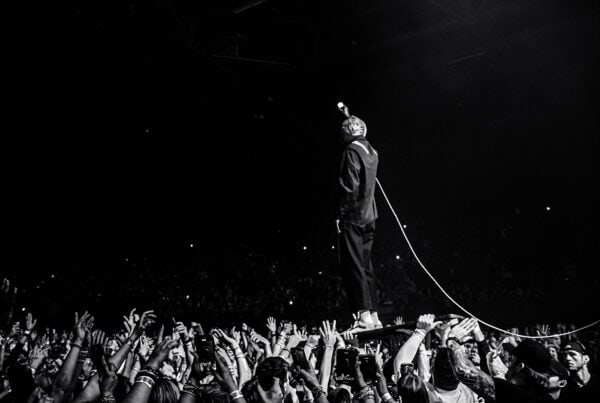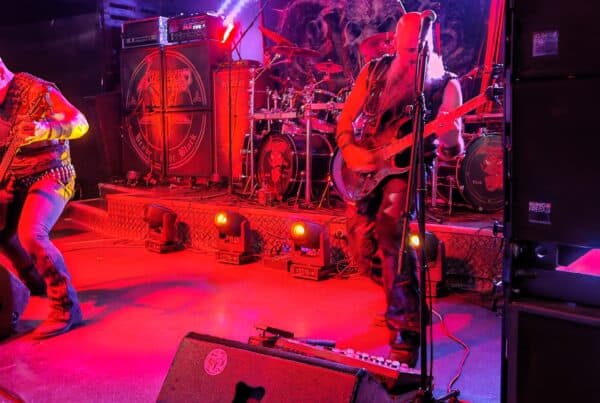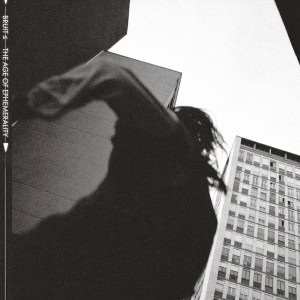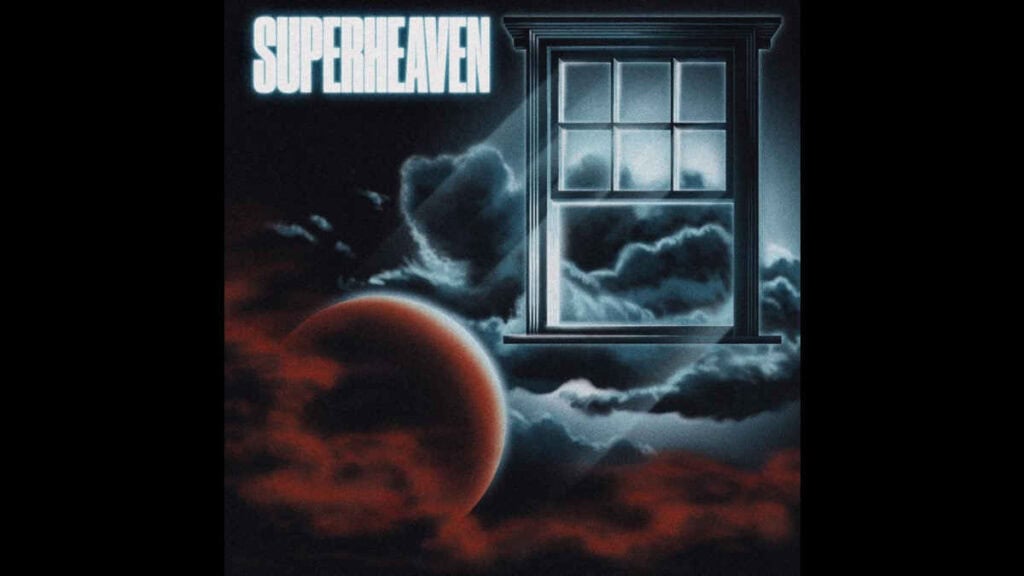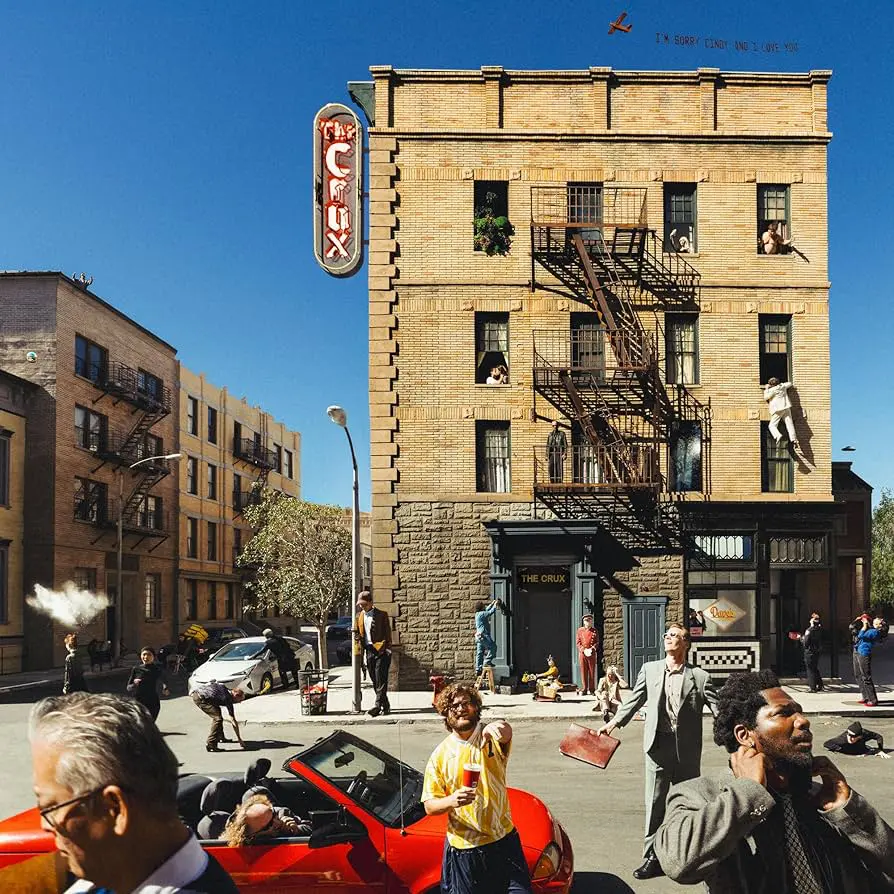I had a distinct feeling that Billie Eilish’s new album would be a double album. This might seem like a tinfoil hat theory at first, but please stick with me. Billie has notoriously dyed her hair to coincide with her album releases. From the bright green and black trademark that accompanied When We All Fall Asleep, Where Do We Go? (black cover, green disc) to the blonde that went along with 2020’s tan-coloured Happier Than Ever, she commits her all to the promotional periods of these releases. This time around, she went very public with a red and black style that doesn’t seem to have found a home yet – as the release of her third studio album, Hit Me Hard and Soft, is blue-themed and accompanied by long, black locks.
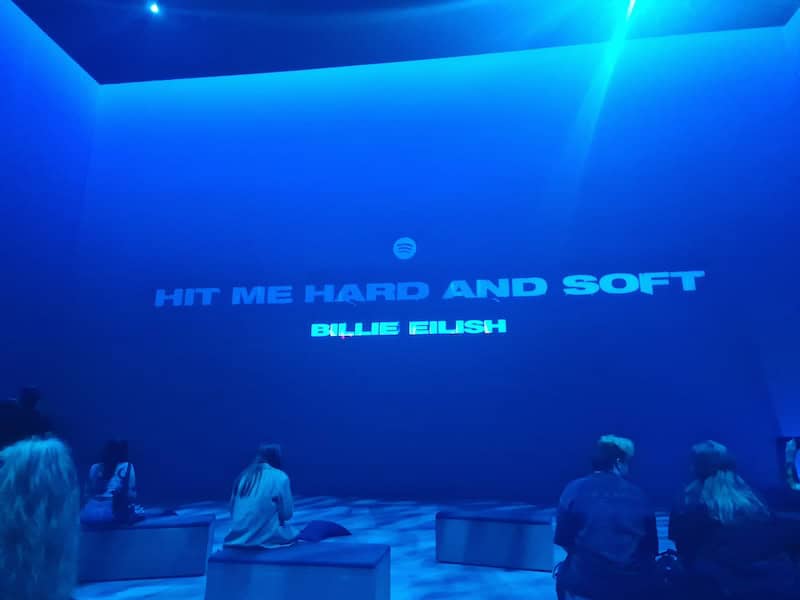 At a glance, spending three years on ten songs feels very Billie. She’s publicly devoted to her work, producing and directing all of her music videos herself and performing all of the stunts within them, without the need for any body doubles. But somewhere inside my brain, something stirred. That stirring became almost violent when, on May 16 2024, just hours before Hit Me Hard and Soft was due to release, the official Soundcloud X (formerly Twitter) account posted a message. “@billieeilish should we tell them”. Tell them what? I ruminate. I deliberate. I see a reversed image of the HMHAS artwork posted to Billie’s website briefly, recoloured red.
At a glance, spending three years on ten songs feels very Billie. She’s publicly devoted to her work, producing and directing all of her music videos herself and performing all of the stunts within them, without the need for any body doubles. But somewhere inside my brain, something stirred. That stirring became almost violent when, on May 16 2024, just hours before Hit Me Hard and Soft was due to release, the official Soundcloud X (formerly Twitter) account posted a message. “@billieeilish should we tell them”. Tell them what? I ruminate. I deliberate. I see a reversed image of the HMHAS artwork posted to Billie’s website briefly, recoloured red.
This theory might seem far-fetched at first. I get it. But when combining the other elements of the conspiracies, I was so on board. Last summer Billie released a line of red-themed merchandise with a slogan reading ‘I don’t know you at all’ which features as a lyric from HMHAS track Chihiro. During the countdown to the anniversary of When We All Fall Asleep, Where Do We Go? in March, the song Ilomilo was skipped. This is not just a song, but a video game which features one red character, and one blue character. Shortly after, Billie’s brother and co-writer, Finneas, posted a TikTok clip playing the track on piano. Fans who received their vinyl copies of the album ahead of its official release date reported hearing the phrase, “But when can I hear the next one?” as the last notes ring out. Billie’s Instagram features blue and red-themed posts. A lot of them. But, as Hit Me Hard and Soft dropped at midnight local time around the world, not a single fan in those ‘future’ timezones in New Zealand, Australia, or Japan reported anything out of the ordinary. Ten tracks of Billie Eilish at her greatest yet is still nothing to be sniffed at.
Billie’s introspective Skinny is the opening track for her first album in three years. In it she discusses the public perception of her, the notion that she might be happy because she “got skinny” is jarring, yet relatable. Billie grew up in public, after all. She began writing songs with her brother Finneas at just 13 years old. Skinny’s simplistic, hushed electric guitar is a nod to those days, while the lyrics refer to failed relationships, depression, and her public period of adolescence. The guitar dances delicately around her hushed vocals which gradually crescendo throughout the track. Skinny moves into a stunning strings section before seamlessly transitioning into Lunch, one of the more hotly anticipated tracks from the album thanks to some ten-second teasers Eilish let the world listen to. Hit Me Hard and Soft had no advance singles. Speaking to Rolling Stone, she confirmed this was because she just doesn’t like them, and wants her fans to experience the record “all at once”.
Indeed, when I attend a limited-time immersive listening party for Hit Me Hard and Soft at London’s Lightroom, that transition between Skinny and Lunch is all-consuming. The tempo ramps up, the visuals change, the bass pounds through the venue, and the waves of fluttering synths wash over me much akin to the oceanic visuals of the album art. As the distortion ramps up on the guitars and the multiple instruments begin to bleed and melt into one another, Lunch could very well be the definition of being hit hard and soft. “You can’t be hit hard and soft,” Billie says, “I love that it’s not possible.” Lunch, from the aforementioned teasers, was the most talked about track because in it Billie discusses lesbian sex and, perhaps more vitally, her desire for it. Lunch shifts away from Skinny in every way imaginable – where Skinny could easily be a sister track to the Barbie soundtrack’s What Was I Made For? Lunch is its antithesis. “I wrote some of it before even doing anything with a girl,” Billie says, “Then wrote the rest after. I’ve been in love with girls for my whole life.” It’s obvious Lunch will provoke listeners, whether fans, media, or bystanders, but Billie says it best herself – “Who fucking cares?”
Lunch’s distortion lends itself perfectly to the shift towards Chihiro, which lulls back to a mid-tempo, rhythmic beat with prominent basslines, and floating, melodic vocals which steadily crescendo up to a synth-heavy climax. It’s intimate, almost erotic, but never suggestive. By contrast, but not jarringly so, Birds of a Feather wouldn’t be out of place on a Paramore album as its big ballad. Billie’s voice feels more refined than ever, and the upbeat, lilting melody could accompany the infamous happily ever after section of a romantic movie easily. The audio reverberates around the room in such a way that I’d believe this had been recorded with binaural techniques if you told me so. Birds of a Feather is the finest example of a track that deserves to be listened to with headphones to appreciate the layering, the intricacies, the aural soundscape that has been ever so subtly pieced together. Wildflower follows, similarly yet distinctive in its own right, slowing the tempo but maintaining the aura of peace, the subjects of love, unrequited and unwanted, desired and detrimental. The full scope of romance is explored throughout the album as a whole, but shines strongest in this duo of well-suited tracks.
The Greatest could fool you into thinking that this suppressed, conservative approach to the album is going to continue throughout. Its introduction features Billie at her most hauntingly beautiful yet, with soft vocals that soar in all the right places. It grows and expands until the three-minute mark where it comes crashing down in a sonic masterpiece. Billie belts her vocals like never before, finally putting an end to the naysayers and their critique that she doesn’t have a “strong” voice once and for all. That powerful vocal is accompanied by strings, synths, and rippling drums that fill every space before diminishing to near-silence for the conclusion of the track. Its structure is so reminiscent of Happier Than Ever’s titular track from 2021. This near-deception continues into L’Amour De Ma Vie, which begins with plucked, muted electric guitars and a regular, rhythmic 4/4 beat that barely falters but then, in a whiplash-inducing moment, transforms into an uptempo, synth-heavy, blissful dance track that would partner perfectly with Oxytocin from her previous record.
Billie has previously referred to Hit Me Hard and Soft as a return to the When We All Fall Asleep, Where Do We Go? era of her musicianship. Where Happier Than Ever was written mid-lockdown, in what Billie claims to be some of the most tumultuous of her life, with a lack of identity, present-day Eilish is self-assured, confident, and teasing that earlier material in a more mature, refined package. The Diner is the perfect example of Bad Guy-esque circus music, with playful, bouncing synths and a bounding bassline that drives the track forward. Billie has taken references from her past, in sound, style, and lyrics, and modernised them for the new era of existence. Her vocals are stylised in an almost-haunting, eerie manner as a lyrical tale of painful lovesickness soon shifts to more sinister undertones – “I saw you in the car with someone else and couldn’t sleep / If something happens to him, you can bet that it was me” she soars.
Bittersuite takes its time, a weaker moment in an otherwise solid record. It’s unremarkable, but it doesn’t need to say or do anything outstanding. It’s a well-positioned breathing space in a full-frontal assault of an album. The closing synths lead stunningly into the album’s closer, Blue. Blue has existed, in some form or another, since Billie was just 15 years of age. It’s been teased at album release parties, it’s been reworked, reformatted, and reloved over the last seven years. Finally, though, Billie presents it to the world as a farewell to Hit Me Hard and Soft. Its lilting, brooding vocals wouldn’t be out of place in its origin era, next to the likes of Ocean Eyes or Bellyache, but the 2024 version of Blue shows musical intelligence even far beyond her 22 years, let alone aged 15. Finneas’s production shines through here, as Billie’s voice cuts through a multitude of layers to the detriment of none of them.
As Hit Me Hard and Soft progresses, it feels like Billie does. From the conservative opening, through an explosive middle section, to the recognition and realisation of the final duo of songs. That it took Billie four years to perfect these ten tracks is more than understandable. Each has its place, each tells a story of self-identity, a motivation for freedom, and a communicated tension that rings true with listeners of all ages. As the final notes of Blue ring out, my tinfoil hat is adjusted one final time as Billie mutters, “When can I hear the next one?” Well, Billie … When can we?


